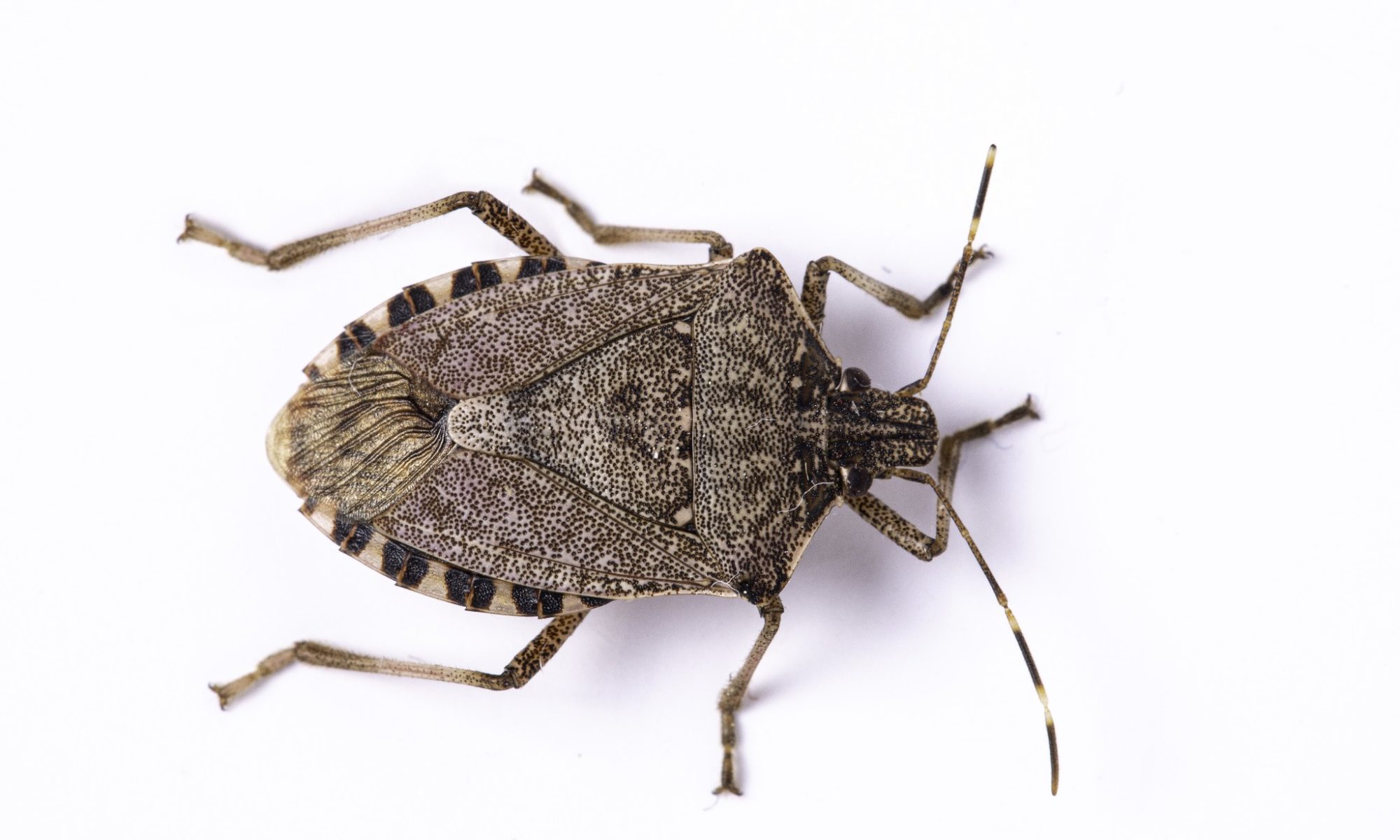
What’s that smell? It is the aroma of an unwanted house guest; you guessed it: a stink bug. So, how do stink bugs get in the house? Keep reading to find out how these stinky invaders are finding their way into your home. And, keep them outside with a few of these easy and natural tips.
If you discover an on-going stink bug infestation that natural remedies aren’t solving, contact Environmental Pest Management for a free quote. We will evict the unwanted pests and solve the stink they’ve caused.
The Stink Bug Origin Story
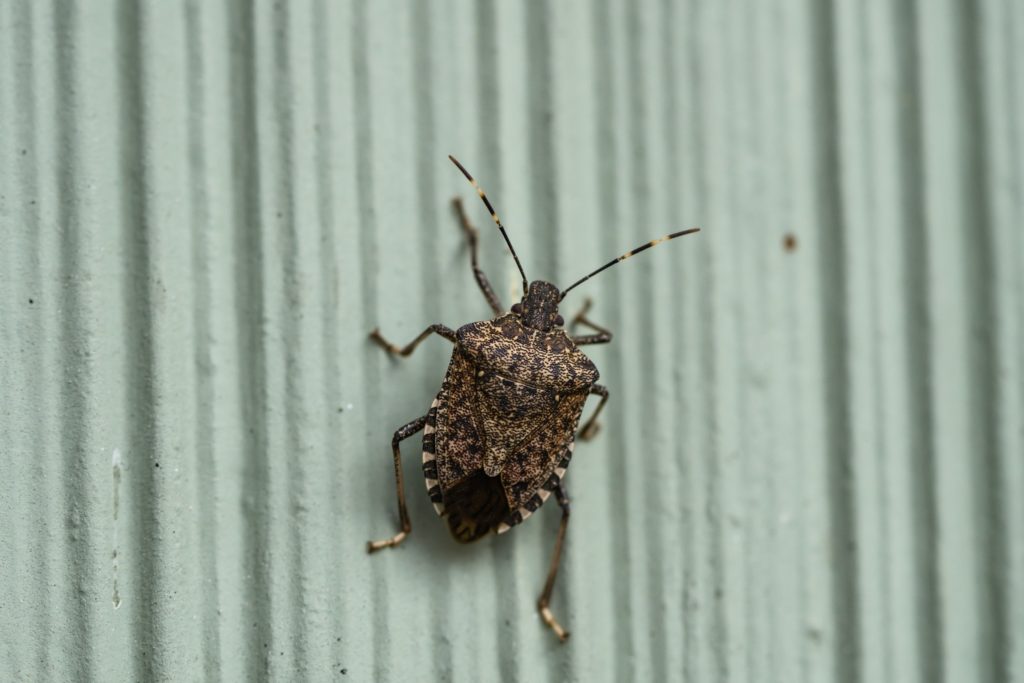
Fittingly named for their brown marble pattern backs, the brown marmorated stink bugs (BMSB) are native to South-East Asia. These invasive hitchhikers found their way over to the United States from China, Korea, Japan, and Taiwan.
In the late 90s, they appeared in the United States in Allentown, Pennsylvania. Since they’ve landed domestically, you can now find them crawling around most of the United States.
While they can be a major pest, they will not harm you or pose a threat to your health. However, when threatened or squashed, these pests release a nose-assaulting scent. They use the scent to fend off predators.
Why They Come Inside
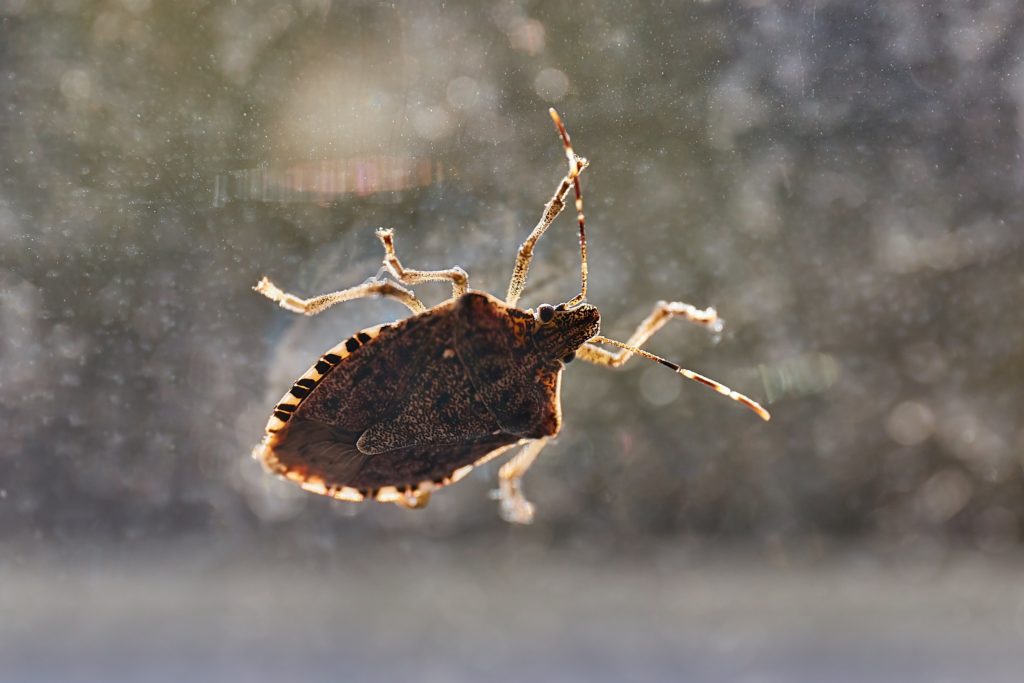
Decreased temperatures and shortened fall days cause the brown marmorated stink bug to seek refuge for diapause. Diapause is a crucial component in their lifecycle where the adult stink bugs’ reproductive activity ceases.
They scout out the prime location for their overwintering, which usually tends to be inside your home. Once they’re nestled in, they release their pungent aroma to attract others to the location.
While overwintering stink bugs can be a major buzz kill, you do not have to worry about them reproducing or causing damage to your home and valuables.
How Do Stink Bugs Get in the House?

Stink bugs will sneak into your home from any cracks and crevices they can find in window and door frames. They will scuttle in through any gaps or holes in the foundations or underneath your home’s siding.
You will mainly see an overwintering population in large structures located close to wooded areas, agricultural fields, gardens, and orchards. They can also occur in locations where there is a dense amount of ornamental plants that attract stink bugs.
Dealing with Stink Bugs
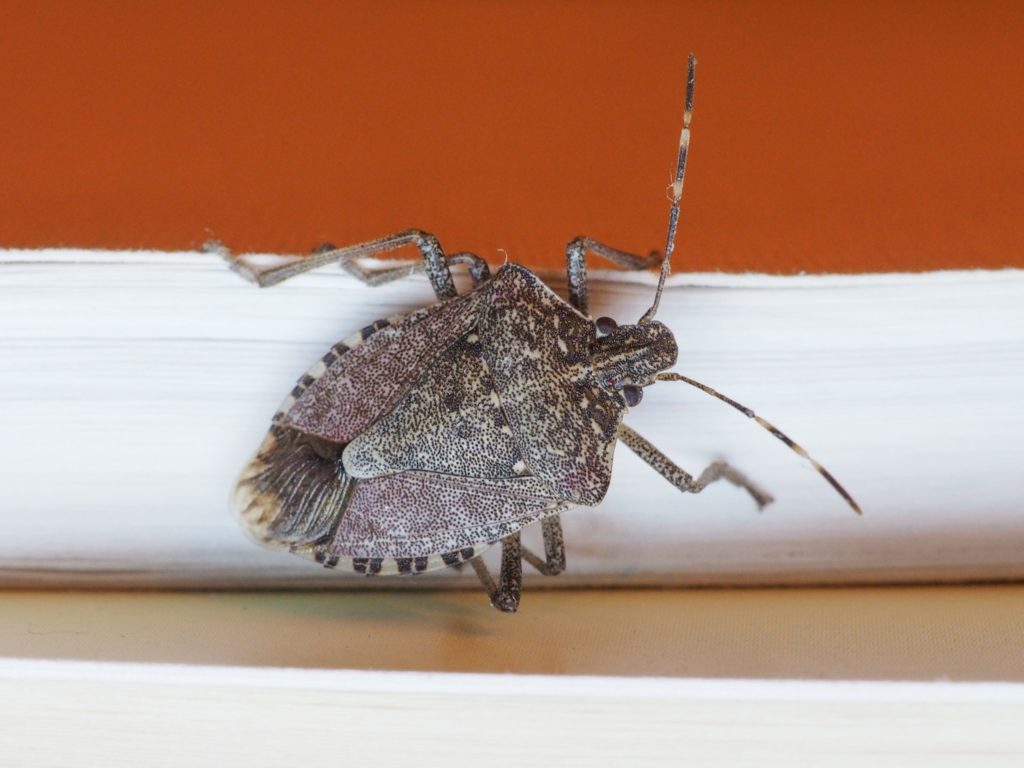
Once in the home, stink bugs generally hang out in tight spaces and upper floors. You may spot them tucked between your curtains and up along the top of the walls in your attic or upstairs bedrooms.
Here are some different techniques you can use to make your home stink-bug-free.
Prevention Methods
Seal points of entry
Before the temperatures outside begin to drop, inspect the outside of your home. Search for any cracks that could be a potential entry point. Pay close attention to your home’s siding and utility pipes.
Check behind your chimney and wooden facia. You can fill any holes or cracks with a quality silicone or silicone-latex caulk.
You can also install screens over your attic vents and chimney to reduce access.
Repair or replace
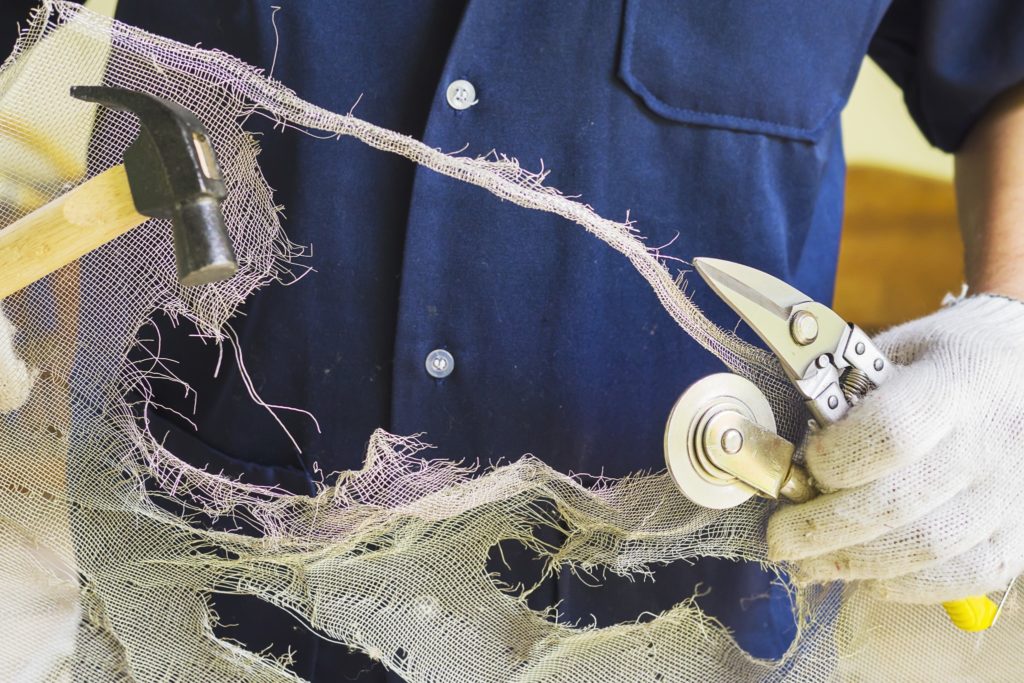
Stink bugs are capable of entering your home from the smallest openings. It is crucial to repair or replace a damaged window or door screen. Be sure to look for any loose mortar or torn weather-stripping, too.
Eliminate moisture
Check for moisture build-up around your home. Ensure that you do not have any clogged drains or leaking pipes. Eliminating any moisture build-up will help prevent many pest infestations.
Proper ventilation
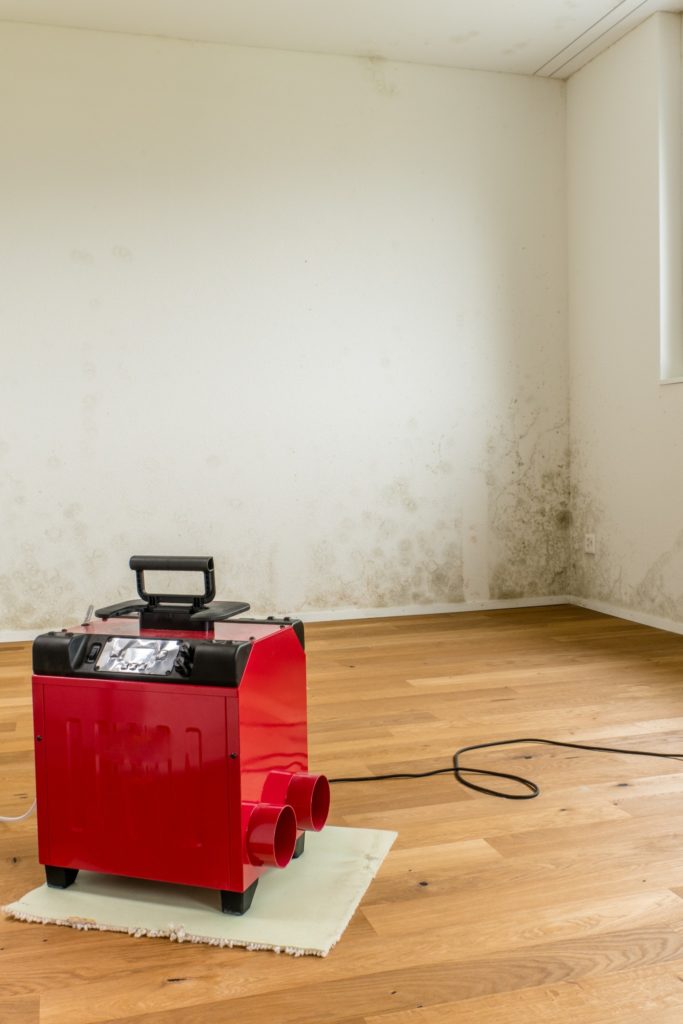
Ensure that your basements, garages, attics, and crawl spaces get plenty of dry air. Doing so can help reduce the amounts of refuge spots. You can also look into using dehumidifiers in these areas.
Lights out
Like a majority of bugs, stink bugs are attracted to lights. Try to keep your outdoor lighting minimal. In the evenings, you can turn off outdoor lights when not in use and pull the blinds to prevent indoor lighting from spilling outside.
What if they’re still getting inside?
If you notice they’re still getting into the home, here are some preventative measures you can take within the home.
Neem Oil

Neem oil comes from a common South Asian, and Indian ornamental shade tree called a Neem tree (Azadirachta indica). The plant-based oil works as a natural insecticide by interfering with the stink bug’s instinctual overwintering behaviors.
Since the oil affects stink bugs’ natural process, it can take up to a week for the oil to take effect. Combine 2 tablespoons of neem oil with 32 ounces of water in a spray bottle. Spray all entry points such as windowsills and infested areas.
Mint Essential Oil
Freshen your home while combating stinky pests. Combine ten drops of mint essential oil and 16 ounces of water. Mist solution on windowsill and doorways to deter entry.
Garlic Spray
Mix 4 teaspoons of garlic powder or a few crushed garlic cloves with 16 ounces of water. Liberally spray on any entry points where stink bugs are entering your home.
Hang up Fly Tape
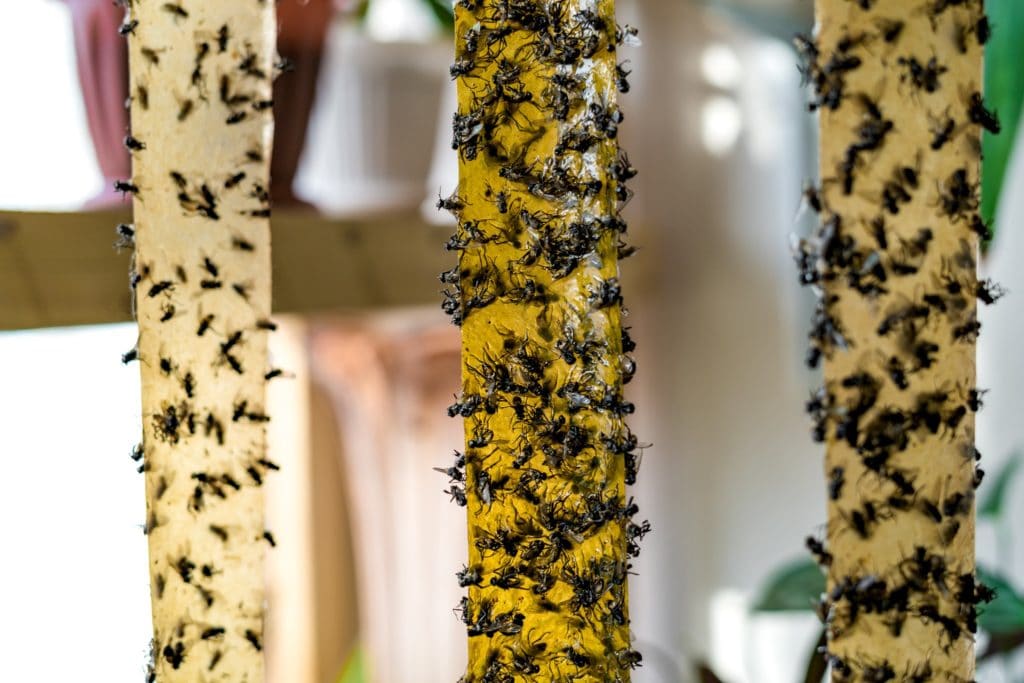
Hanging fly tape near windows and doorways will catch these pesky stinkers. You may find it an unattractive method, but it’s simple and effective.
Utilize Dryer Sheets
You might have a box or two of these already lying around. Stink bugs are offended by the odor of dryer sheets. You can use them to wipe down window sills, screens, and doorways to ward them off.
Pull out the Vacuum
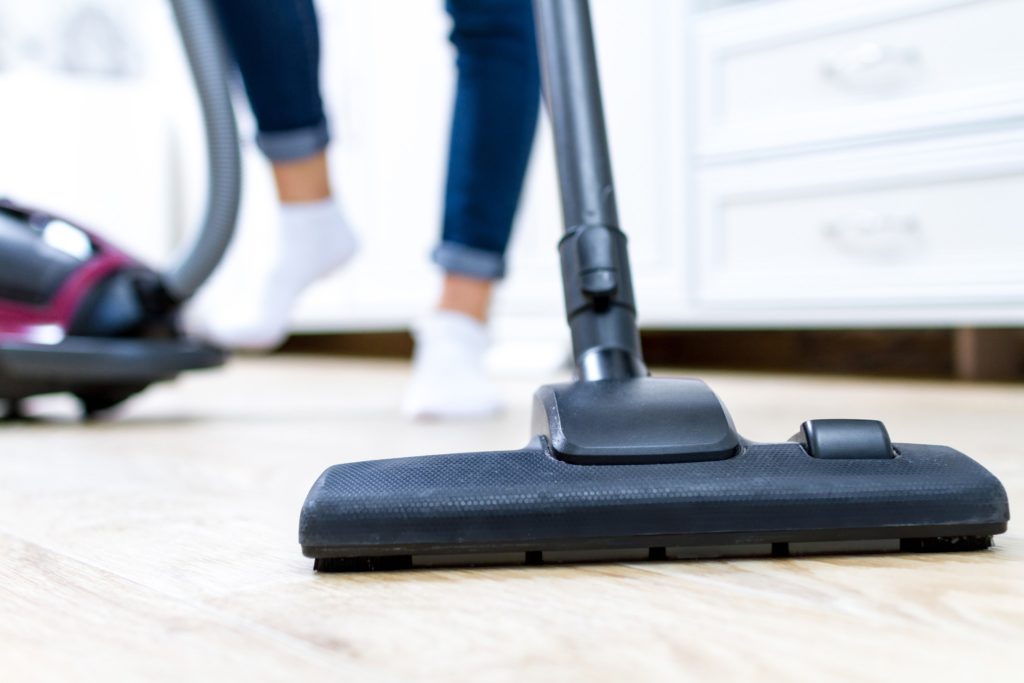
For larger infestations, you can use a vacuum cleaner to suck the crawlies up. This method is best if you have a bagged vacuum cleaner. You’ll want to throw out the bag immediately once finished. That way, you keep from gassing out the entire family with the aroma of stink bugs.
Stay Away from Chemical Ridden Insecticides
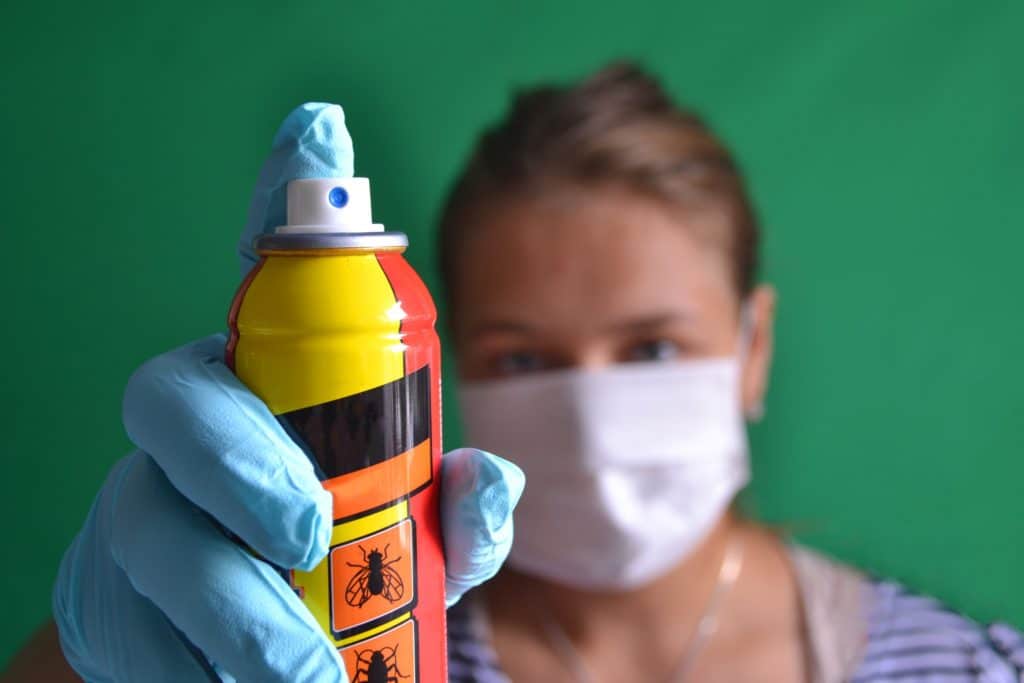
While it may be the easy to grab any generic chemical-filled insecticide, this is not the best option. These chemicals can also pose risks to children and pets and harm the environment.
There are very few that do the job properly. If your chosen chemicals manage to work, the bug corpses can attract new bugs to feast.
Too Stinky of a Job?

No longer will you be asking yourself, “how do stink bugs get in the house?” but knowing the answer doesn’t solve the problem at hand.
Call Environmental Pest Management for a free quote. We have decades of experience with stink bugs and crawlies of all kinds.
We will come to your home and use Integrated Pest Management, which means we solve the problem using environmentally safe products. We work diligently to provide you and your family with long term and safe solutions.
